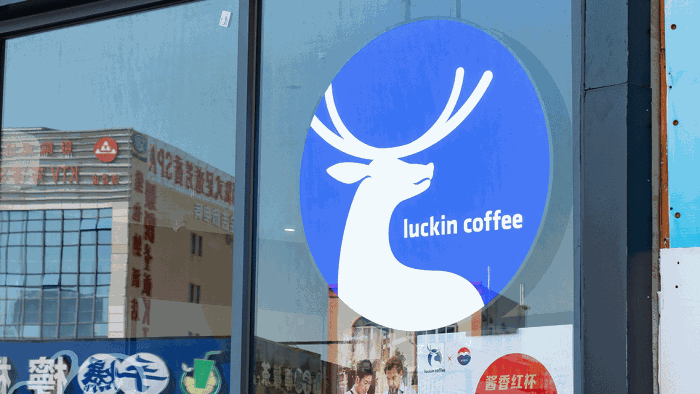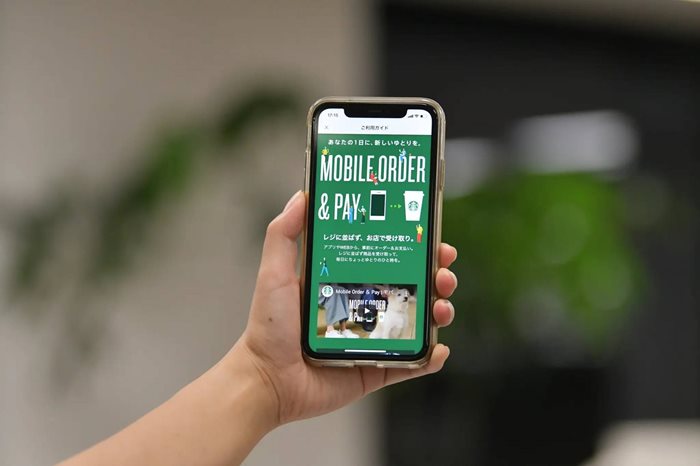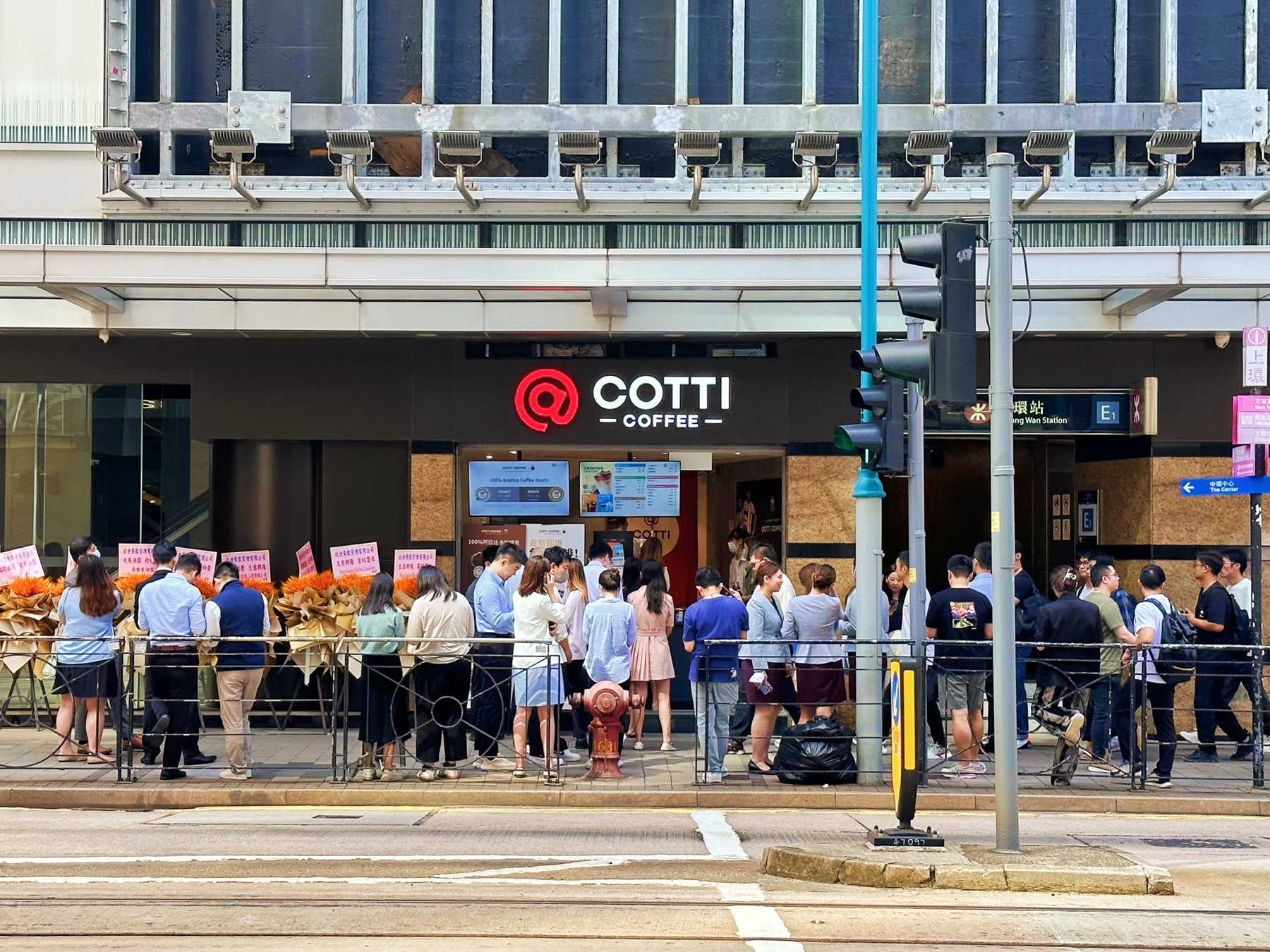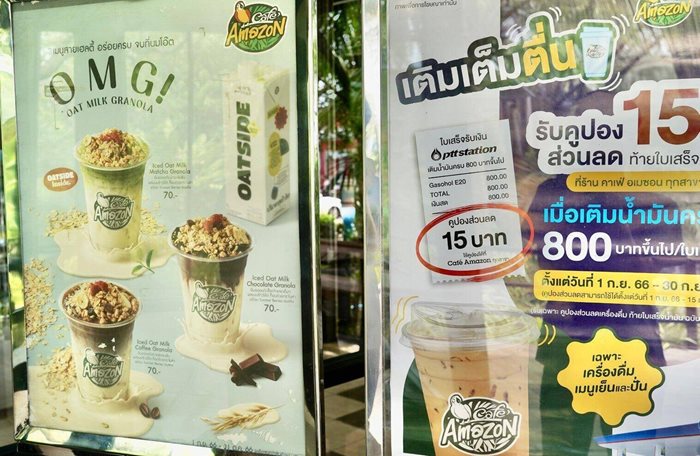World Coffee Portal delves into the East Asian branded coffee shop market to unpack the key consumer trends, market dynamics and operator strategies shaping this rapidly developing, fast growing and highly opportune segment

A Luckin Coffee store in Zhongshan, Guangdong | Photo credit: Freer/Shutterstock
Project Café East Asia 2024, World Coffee Portal’s comprehensive analysis of the East Asian branded coffee shop market, revealed the total segment grew 24% over the last 12 months and has doubled in size over the last five years to reach 119,221 stores, with six of the 10 largest markets achieving double digit outlet growth.
1. China becomes a global coffee shop powerhouse
China has overtaken the US to as the largest branded coffee shop market in the world by outlets having added 18,330 net new stores over the last 12 months to exceed 49,690 outlets. Much of the market ’s 58% year-on-year outlet growth has been driven by the expansion of convenience-focused operators Luckin Coffee and Cotti Coffee, which added more than 5,000 and 6,000 net new locations (many of them small-format, takeaway and delivery focused stores) respectively.
Along with Starbucks, which opened 785 outlets over the last 12 months to exceed 6,800 stores, the three market leaders hold a 52% share of China’s branded coffee shop market. A further 14 operators opened more than 100 net new stores in the country over the last 12 months.
Highlighting China’s rapid ascent as a major coffee consumer, 89% of 4,000 consumers surveyed by World Coffee Portal purchase coffee out-of-home at least once a week. Delivery remains an important sales channel in China, with 87% of consumers surveyed indicating they ordered a beverage for delivery during the last 12 months – although just 10% did so on their last order.
Industry leaders are also broadly positive about trading in China. Forty percent surveyed report 1-5% annual sales growth, with nearly a third achieving higher than 5%. Sixty-five percent indicate footfall has recovered to pre-pandemic levels, indicating that trading has yet to fully regain momentum following the ending of China’s pandemic restrictions in early 2023.
While China’s branded coffee shop market is among the most digitally integrated in the world, cash remains the most popular payment method according to 65% of industry leaders surveyed, followed by mobile payment apps, such as Alipay and WeChat, and eWallets. China is also the fastest-growing market in East Asia by outlets ahead of Malaysia (28%) and the Philippines (15.3%).

The Starbucks Mobile Order & Pay app in Japan | Photo credit: Starbucks
2. An advanced coffee app eco-system
The East Asian branded coffee shop market is home to a rich eco-system of e-commerce apps. Operated by tech giant Tencent, WeChat (or Weixin as it is known China) is often described as China’s ‘everything app’ due to its multiple functions – from social media to e-commerce, dating and maps. The app has more than 810 million registered accounts in China and enables coffee chains to facilitate pre-ordering, delivery, payments and marketing promotions.
In China, WeChat operates food and beverage marketplace Meituan, which has around 75 million monthly active users and nearly three million annual takeaway coffee users in Shanghai alone. WeChat is available outside of China, with 12 million users in Malaysia, five million in South Korea and 2.5 million in Thailand. However, international versions are typically incapable of transactions.
E-commerce giant Alibaba’s Alipay is a major competitor to Tencent’s WeChat and focuses solely on payments. Alibaba also offers a rival food and beverage app, Ele.me, which has around 68 million monthly active users. Major coffee chains, including Luckin Coffee, Starbucks, McCafé, NOWWA, and Yongpu Coffee all partner with both Meituan and Ele.me for ordering, payment and marketing. Coffee operators also use Baidu Delivery, local services app Koubei, map provider, Amap and online shopping platform Taobao to facilitate digital transactions.
Demonstrating the close integration between digital and physical sales channels in China, in 2022, Canada’s Tim Hortons signed a two-year deal to sell products through the Alibaba app and its 300-store Freshippo convenience chain.
With more than 20 million users, Malaysia’s Touch ‘n Go eWallet enables payments at major branded coffee chains, including The Coffee Bean & Tea Leaf, Dunkin’ and Starbucks. In 2023 the app expanded to mainland China, Japan, Singapore, South Korea, Thailand and Indonesia and later partnered with Singapore-based food and beverage delivery app Foodpanda.
East Asian coffee chains have also invested heavily in custom-built apps, many of which connect to third-party e-commerce sites for payment and promotions. Luckin Coffee has more than 120 million registered users on its in-house app and guarantees delivery within 30 minutes. Singapore-based Flash Coffee has developed its own app with pre-order, delivery and loyalty functionality. As of mid-2022, Indonesia’s Kopi Kenangan had amassed 2.3 million users on its in-house app.
.jpg.aspx?lang=en-GB&width=700&height=467)
A Tims Express kiosk in Wuhan, China | Photo credit: Tims China
3. Value and smaller format stores
Value-focused and small format coffee chains are widespread throughout East Asia. Nimble outlets with little or no seating prioritising delivery and pick-up orders enable operators to significantly reduce overheads associated with property, fit-outs, staff and energy costs.
China’s Luckin Coffee was a pioneer of this strategy and has scaled to more than 13,200 locations since opening its first store in 2018. A strong focus on value is also essential for customer adoption and retention in East Asian markets, where lower per capita income often reduces the scope for discretionary spending. This dynamic also gives local value-focused chains, including Indonesia’s Kopi Kenangan, Malaysia’s Zus Coffee and Singapore’s Flash Coffee, an advantage over international competitors, many of which set prices on par with their stores in the US and Europe.
Luckin prices beverages at RMB 10-20 ($1.40-$2.75) while Starbucks’ menu starts at around RMB 30 ($4.10). Luckin has also deployed this strategy in its first international market, Singapore, where it offered up to a 40% discount on beverages in September 2023.
However, value-focused coffee chains have created a fiercely competitive landscape with heavy discounting, price undercutting and aggressive outlet expansion. China’s Cotti Coffee has opened more than 6,000 stores since 2022 and typically prices beverages around RMB 1 ($0.15) lower than rival Luckin Coffee.
In early 2023 Cotti lowered the cost of a latte to RMB 9.9 ($1.38), prompting Luckin to match and pledge to maintain that price for two years. Cotti responded by cutting its latte price to RMB 8.8 ($1.23).
East Asia’s domestic coffee chains also often position themselves as accessible ‘gateway’ brands for new branded coffee shop consumers. Indonesian electric coffee cart concept Jago negates the need for third-party delivery platforms and further reduces costs to consumers with zero delivery fees. Meanwhile, Fore Coffee is seeking to popularise premium Indonesian-grown coffee among domestic consumers, with beverages starting from Rp 21,000 ($1.36).
.jpg.aspx?lang=en-GB&width=700&height=525)
China’s Cotti Coffee entered Hong Kong in November 2023 | Photo credit: Cotti Coffee
4. Local operators explore further international growth
As the East Asian branded coffee shop market matures, rapidly expanding operators established in the last five-six years are now seeking international growth. Underscoring the rapid development of markets in the region, Starbucks waited more than ten years to open its first international store in Canada in 1987.
Following rapid 12-month outlet growth China is now the largest branded coffee shop market in the world by outlets – with more than 35 brands operating over 100 stores and seven with 1,000 or more. Eighty percent of operators in China are domestic chains, with few East Asian brands entering the market and even fewer domestic operators venturing abroad. However, highlighting the growing maturity of the Chinese market and significant growth opportunities in the region, the two largest domestic operators ventured abroad this year.
In March 2023, market leader Luckin Coffee took its ‘first step’ overseas with a store in Singapore and has since opened 30 franchised outlets across the city-state.
Having established a 6,000-plus store footprint in little over 12 months, Cotti Coffee has opened stores in South Korea, Indonesia, Japan, Hong Kong, Canada and Vietnam. Its strategy for expansion in China and international markets involves reducing costs by forgoing franchise-related fees and instead opting for a profit sharing arrangement. Indonesia’s Kopi Kenangan made its international debut in Malaysia in October 2022 before entering Singapore in September 2023. The chain has sought to harness the strong first wave kopi coffee culture familiar to consumers across these markets.
A major trading hub and financial centre, Singapore has also been the first step abroad for fellow Indonesian coffee chain Fore Coffee and South Korea’s Compose Coffee. Selangor-based Zus Coffee chose the Philippines for its overseas debut while Thai milk tea and coffee chain ChaTraMue opened the first of 40 new sites in Malaysia in October 2023 after signing a 20-year agreement with local F&B operator Woodpeckers Group.

A digital display advertising blended coffee beverages at a Café Amazon store in Buriram, Thailand | Photo credit: pinpoint8/Shutterstock
5. A huge market for infused and flavoured coffee
With many East Asian consumers unaccustomed to the relatively bitter taste of espresso, coffee infused with local flavours, including fruit and popular food brands, is widespread. This approach enables operators to maximise their appeal tapping into local culinary trends and traditions.
Unlike in the US and Europe, fruit-infused coffee is commonplace across East Asia. Malaysia’s Tealive has offered a fruit-infused espresso range since 2019, with China’s M Stand and Seesaw Coffee launching popular fruit pulp and grapefruit-infused coffee ranges. Likewise, Indonesia’s Janji Jiwa and Kopi Kenangan both offer extensive fruit-infused coffee menus.
East Asia’s taste for flavoured coffee beverages also influences the strategies of international chains. Tim Hortons’ menu in China includes watermelon and coconut cold brew coffee alongside a buffalo milk latte range. Meanwhile, KFC, operated by Yum China, serves lemon, lychee and grapefruit sparkling coffee as part of its KCOFFEE brand in the country.
Greater knowledge of local tastes and popular traditional beverages gives domestic brands a distinct marketing advantage. Luckin Coffee’s tie-up with Kweichow Moutai, a highly popular Chinese alcoholic spirit, saw more than 5.42 million cups of its baijiu-infused latte sold in one day. Soon after, market rival Cotti Coffee leveraged the widespread popularity of the Wuchang Rice brand to launch its own rice milk latte.
Gigi Coffee, which operates around 130 stores across Malaysia offers an ‘essential’ range of espresso-based beverages complemented by locally inspired drinks, such as butter cream latte, a sweeter take on traditional Malaysian butter coffee (kopi gu you), alongside a colourful range of fruit-infused iced coffee beverages aimed at younger consumers.
Fellow Malaysian operator Zus Coffee offers an espresso-based beverage infused with gula melaka, a palm sugar syrup often combined with pandan leaves and served as an iced coffee beverage in kopitiams – traditional informal cafés found across Indonesia, Malaysia and Singapore. Meanwhile, Vietnamese cà phê, (robusta coffee with condensed milk and sugar) has been widely adopted by the country’s branded coffee chains, including Phuc Long Coffee & Tea, The Coffee House and select Starbucks stores.
Project Café East Asia 2024 is World Coffee Portal’s comprehensive study of 18 branded coffee shop markets across East Asia.
The report identifies the size of the region’s branded coffee shop market by outlets and assesses growth rates to provide an in-depth strategic examination of the current retail environment. Featuring consumer in-depth consumer research for the Chinese market, industry consultations, analysis of key market topics and competing operator strategies, the report unpacks key opportunities and potential future barriers to growth and will help your business tailor its approach to the unique demands of this region.
To purchase the report or to make an enquiry, please contact: enquiries@worldcoffeeportal.com | +44(0)20 7691 8800
